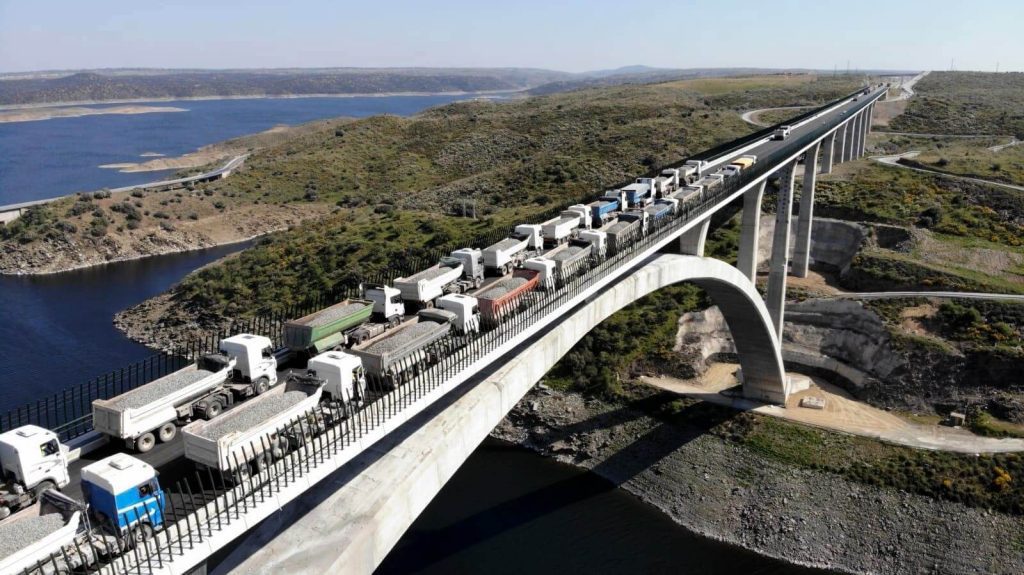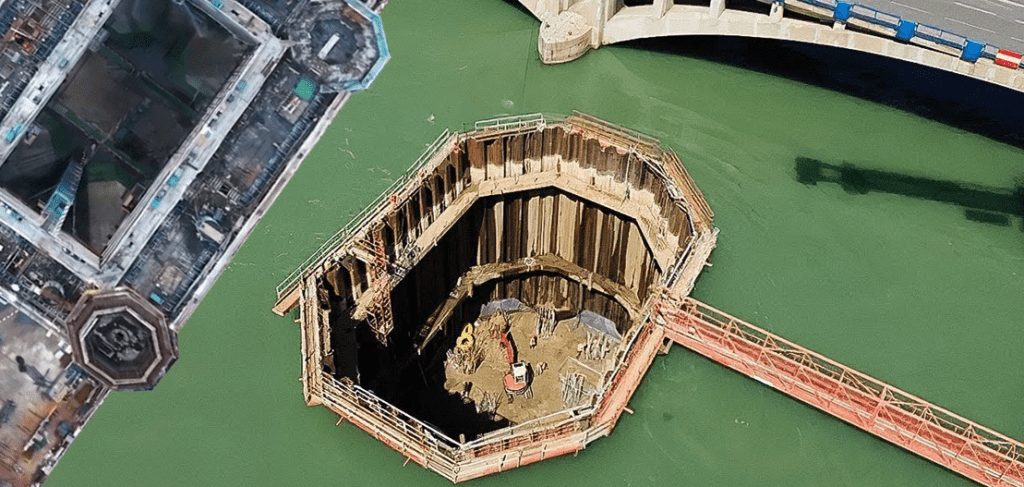Structural Design for Bridges: Key Considerations and Best Practices
The design of bridges is a complex and crucial process, as these structures play a vital role in connecting communities and facilitating the movement of people and goods. In order to ensure the safety and longevity of bridges, it is essential to consider a wide range of factors during the design process. This article will explore some of the key considerations and best practices for structural design in bridge construction, covering topics such as load analysis, materials selection, and seismic design.
By understanding these principles, engineers and designers can create bridges that are both functional and durable.
Here’s the key considerations for designing a bridge.
- Load Test
- Seismic design
- Foundation design
- Deck design
- Superstructure design
- Abutment and pier design
- Cable design
- Expansion joint design
- Maintenance and repair
Let me discuss all those with best practices.
Load Test
A load test is a crucial step in the design process of a bridge, as it helps engineers to verify that the structure is capable of safely supporting the anticipated loads. There are several best practices to consider when conducting a load test on a bridge:

- Plan the test carefully: A load test should be carefully planned in advance, with clear objectives and a detailed testing procedure. It is important to consider factors such as the type of loads to be applied, the testing equipment to be used, and the safety measures to be implemented.
- Use appropriate testing equipment: It is important to use the right testing equipment for the specific needs of the bridge. This may include load cells, hydraulic jacks, or other specialized equipment.
- Follow proper safety procedures: Safety should be the top priority during a load test. This may involve the use of barriers to keep personnel away from the testing area, the use of protective gear, and the implementation of emergency procedures.
- Monitor and record the test: It is important to closely monitor the test as it is being conducted and to accurately record the results. This may involve the use of sensors, cameras, or other monitoring devices.
- Analyze the results: After the test is complete, the results should be carefully analyzed to determine the performance of the bridge under load. This may involve comparing the results to design calculations and identifying any areas of concern.
By following these best practices, engineers can conduct load tests that are accurate, safe, and informative, and use the results to improve the design of the bridge.
Materials Selection
Materials selection is a crucial aspect of structural design for bridges, as the choice of materials can significantly impact the strength, durability, and cost of the structure. Here are some best practices to consider when selecting materials for a bridge:

- Evaluate the specific requirements of the project: The materials used in a bridge should be chosen based on the specific requirements of the project. This may include factors such as the expected loads, the environmental conditions, and the desired lifespan of the bridge.
- Consider the structural properties of different materials: Different materials have different structural properties, and it is important to choose materials that are suitable for the specific needs of the bridge. For example, steel is strong and durable, but is susceptible to corrosion, while concrete is less strong but is more resistant to corrosion.
- Take into account the cost and availability of materials: The cost and availability of different materials should also be considered when making a selection. In some cases, a more expensive material may be justified due to its superior performance, while in other cases a less expensive material may be sufficient.
- Consider the sustainability of materials: Sustainability is an increasingly important factor in materials selection, and it is important to consider the environmental impact of different materials. For example, using recycled materials or materials with low embodied energy can help to reduce the carbon footprint of a bridge.
By following these best practices, engineers can make informed decisions about materials selection that take into account the specific needs of the project and the long-term performance of the bridge.
Seismic Design
Seismic design is the process of designing a bridge to withstand the forces of earthquakes and remain functional after an event. Seismic design is particularly important in areas prone to earthquakes, as these events can cause significant damage to bridges and other structures. Here are some best practices to consider when designing a bridge for seismic resistance:
- Conduct a site-specific hazard analysis: It is important to assess the ground motion characteristics of the site where the bridge will be located in order to determine the seismic hazards that it will be subjected to. This may involve analyzing data on past earthquakes, modeling ground motion, and assessing the soil conditions at the site.
- Use specialized design techniques: There are a number of specialized design techniques that can be used to enhance the seismic resistance of a bridge. These may include base isolation, energy dissipation devices, and other passive or active systems.
- Consider the consequences of failure: When designing a bridge for seismic resistance, it is important to consider the potential consequences of failure. This may involve evaluating the potential loss of life, economic damage, and other impacts in the event of an earthquake.
- Incorporate redundancy and ductility: Redundancy and ductility are important concepts in seismic design, as they can help to ensure that a bridge remains functional even if some of its elements are damaged. Redundancy refers to the use of multiple structural elements to support the loads, while ductility refers to the ability of a material or structure to deform without failing.

By following these best practices, engineers can design bridges that are able to withstand the forces of earthquakes and remain functional after an event. This can help to ensure the safety of the bridge and the surrounding community, as well as minimize the economic impact of earthquakes.
Superstructure Design
The superstructure of a bridge is the portion of the structure that spans the distance between the support points and carries the loads imposed on the bridge. Proper superstructure design is crucial for the strength and stability of the bridge, and there are a number of best practices to consider when designing the superstructure of a bridge:
- Determine the span length: The span length of a bridge is the distance between the support points, and it is a key factor in the design of the superstructure. The span length will determine the type of structural system that is most appropriate, as well as the size and shape of the structural elements.
- Select a structural system: There are a number of different structural systems that can be used for bridges, including beams, girders, trusses, and arches. The most appropriate system will depend on the span length, the loads to be carried, and the desired appearance of the bridge.
- Design the structural elements: Once the structural system has been chosen, the individual structural elements must be designed. This may involve determining the size and shape of the members, as well as the details of the connections between them.
- Consider the construction process: The superstructure of a bridge must be designed with the construction process in mind. This may involve the use of prefabricated elements, the incorporation of temporary supports, and the coordination with other aspects of the project.
By following these best practices, engineers can design superstructures for bridges that are strong, stable, and efficient. This is essential for the overall performance and safety of the bridge.
Foundation Design
The foundation of a bridge is the portion of the structure that transfers the loads from the superstructure to the ground.

Proper foundation design is crucial for the stability and safety of the bridge, and there are a number of best practices to consider when designing the foundation of a bridge:
- Conduct a site investigation: It is important to gather as much information as possible about the site where the bridge will be located in order to determine the most appropriate foundation design. This may involve testing the soil, analyzing the geology, and assessing the hydrology of the site.
- Consider the type of foundation: There are a number of different types of foundations that can be used for bridges, including shallow foundations, deep foundations, and piles. The most appropriate type of foundation will depend on the specific requirements of the project, including the soil conditions, the loads to be supported, and the water table.
- Design for stability: The foundation of a bridge must be designed to provide stability and prevent the structure from tilting or sliding. This may involve the use of lateral earth pressures, inclined piles, or other measures to provide lateral support.
- Use appropriate materials: The materials used for the foundation of a bridge should be chosen based on their ability to support the loads and resist the environmental conditions of the site. This may involve the use of reinforced concrete, steel, or other specialized materials.
By following these best practices, engineers can design foundations for bridges that are stable, durable, and able to effectively transfer the loads to the ground. This is essential for the overall safety and performance of the bridge.
Deck Design
The deck of a bridge is the roadway surface that carries the loads imposed by vehicles and pedestrians.

Proper deck design is crucial for the functionality and safety of the bridge, and there are a number of best practices to consider when designing the deck of a bridge:
- Determine the width of the deck: The width of the deck should be determined based on the expected traffic volume and the type of vehicles that will be using the bridge. It is important to ensure that the deck is wide enough to accommodate the anticipated traffic, while still being as efficient as possible.
- Design the slope of the deck: The slope of the deck should be designed to provide an appropriate level of drainage and to meet the accessibility requirements for pedestrians. In general, the slope of the deck should be as shallow as possible, while still allowing for effective drainage.
- Incorporate drainage provisions: The deck of a bridge should be designed with provisions for drainage in order to prevent water from pooling on the surface. This may involve the use of drainage channels, grates, or other devices.
- Consider the effects of temperature: The expansion and contraction of the deck due to temperature changes should be taken into account during the design process. This may involve the use of expansion joints or other provisions to allow for movement.
By following these best practices, engineers can design decks for bridges that are functional, safe, and efficient. This is essential for the overall performance and safety of the bridge.
Abutment and Pier Design
Abutments and piers are the support structures that transfer the loads from the superstructure of a bridge to the foundation.

Proper design of these elements is crucial for the stability and safety of the bridge, and there are a number of best practices to consider when designing abutments and piers:
- Determine the loads to be carried: The design of abutments and piers should be based on an analysis of the loads that they will be subjected to. This may involve evaluating the weight of the superstructure, the anticipated traffic, and any environmental loads such as wind and water.
- Consider the soil conditions: The soil conditions at the site where the bridge will be located will play a significant role in the design of the abutments and piers. It is important to assess the soil type, bearing capacity, and other factors in order to determine the most appropriate design.
- Use appropriate materials: The materials used for the abutments and piers should be chosen based on their ability to support the loads and resist the environmental conditions of the site. This may involve the use of reinforced concrete, steel, or other specialized materials.
- Incorporate provisions for expansion and contraction: The abutments and piers of a bridge should be designed with provisions for expansion and contraction due to temperature changes and other factors. This may involve the use of expansion joints or other devices.
By following these best practices, engineers can design abutments and piers for bridges that are stable, durable, and able to effectively transfer the loads to the foundation. This is essential for the overall safety and performance of the bridge.
Cable Design
Cables are an important element in the design of suspension bridges and cable-stayed bridges, as they provide the primary structural support for the superstructure.

Proper design of cables is crucial for the strength and stability of the bridge, and there are a number of best practices to consider when designing cables for a bridge:
- Select appropriate materials: The materials used for the cables should be chosen based on their strength, durability, and resistance to corrosion. Steel is a common material for bridge cables, but other materials such as fiber reinforced polymer (FRP) may also be used.
- Consider the cable layout: The layout of the cables on a bridge can have a significant impact on the overall performance of the structure. It is important to consider the arrangement of the cables in order to achieve the desired balance of strength and efficiency.
- Design the anchors and connections: The anchors and connections for the cables are critical elements that must be carefully designed in order to ensure the stability of the bridge. This may involve the use of specialized devices such as dead-end anchors or saddle connections.
By following these best practices, engineers can design cables for bridges that are strong, durable, and able to effectively transfer the loads to the support points. This is essential for the overall safety and performance of the bridge.
Expansion Joint Design
Expansion joints are devices that are incorporated into the design of a bridge to allow for movement due to temperature changes and other factors.

Proper design of expansion joints is crucial for the durability and performance of the bridge, and there are a number of best practices to consider when designing expansion joints for a bridge:
- Determine the expected movement: The design of the expansion joints should be based on an analysis of the expected movement of the bridge. This may involve evaluating the effects of temperature changes, shrinkage, and other factors that could cause the bridge to expand or contract.
- Select appropriate materials: The materials used for the expansion joints should be chosen based on their ability to withstand the expected movements and environmental conditions of the bridge. This may involve the use of elastomeric materials, such as rubber or neoprene, or other specialized materials.
- Consider the effects on the superstructure: The design of the expansion joints should take into account the effects on the superstructure of the bridge. This may involve evaluating the stresses that will be induced in the structural elements and ensuring that they are within acceptable limits.
- Incorporate provisions for maintenance: The expansion joints of a bridge should be designed with provisions for maintenance in order to ensure their long-term performance. This may involve the use of removable covers or other access points for inspection and repair.
By following these best practices, engineers can design expansion joints for bridges that are durable, efficient, and able to accommodate the expected movements of the structure. This is essential for the overall performance and longevity of the bridge.
Maintenance and Repair
Proper maintenance and repair is essential for the long-term durability and performance of a bridge.

There are a number of best practices to consider when designing a bridge with maintenance and repair in mind:
- Incorporate provisions for inspection: The design of the bridge should incorporate provisions for inspection, in order to identify any potential issues before they become serious problems. This may involve the use of removable covers, access points, or other devices to facilitate inspection.
- Use durable materials: The materials used in the construction of the bridge should be chosen with durability in mind, in order to minimize the need for maintenance and repair. This may involve the use of corrosion-resistant materials, such as stainless steel or FRP, or other specialized materials.
- Design for easy maintenance: The design of the bridge should consider the ease of maintenance, in order to minimize the time and cost required for maintenance and repair activities. This may involve the use of modular or prefabricated elements, the incorporation of access points, or other design considerations.
- Develop a maintenance plan: A comprehensive maintenance plan should be developed for the bridge, outlining the tasks that need to be performed, the frequency of maintenance, and the resources required. This plan should be regularly reviewed and updated as needed.
By following these best practices, engineers can design bridges that are durable and require minimal maintenance and repair over their lifespan. This can help to ensure the long-term performance and safety of the bridge.
Wrapping Up
In conclusion, the structural design of a bridge is a complex and multifaceted process that involves a wide range of considerations and best practices.
From the selection of materials and the design of the foundation, to the layout of the cables and the incorporation of expansion joints, every aspect of the structure must be carefully planned and designed in order to ensure the strength, stability, and safety of the bridge.
By following the best practices outlined in this article, engineers can design bridges that are durable, efficient, and able to withstand the demands of the environment and the loads imposed on them.



